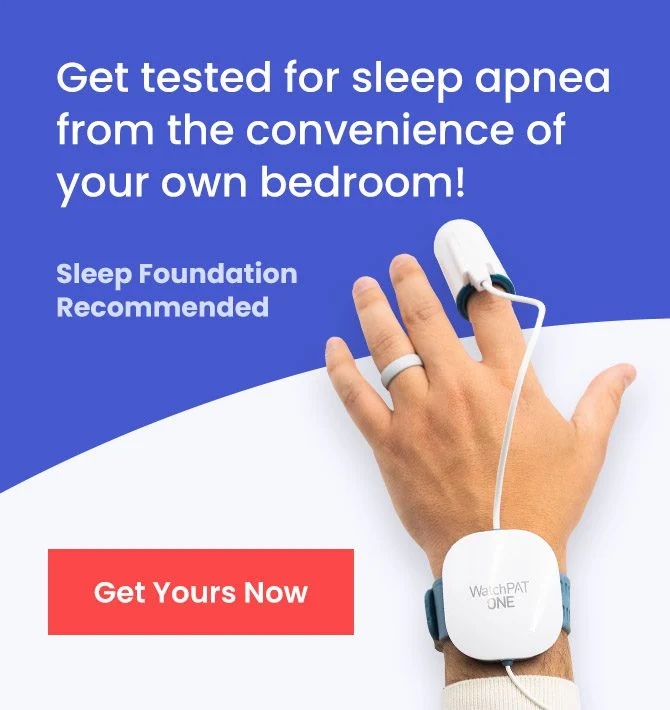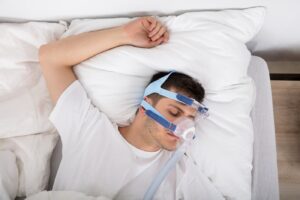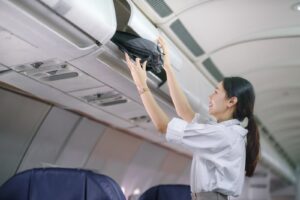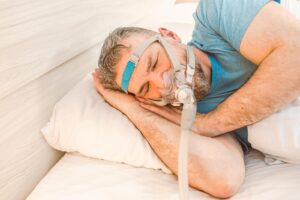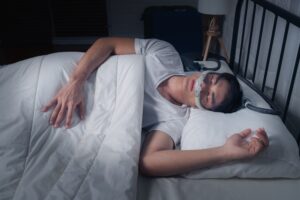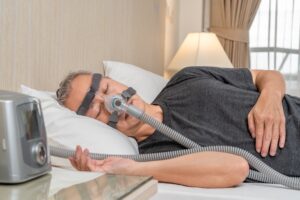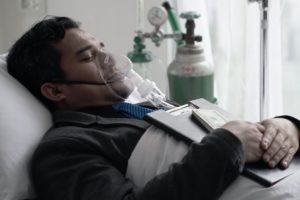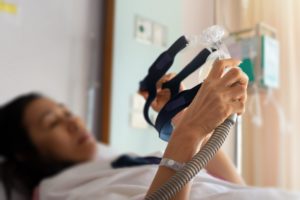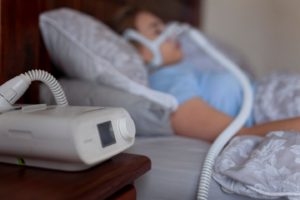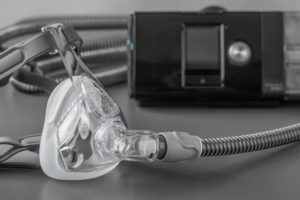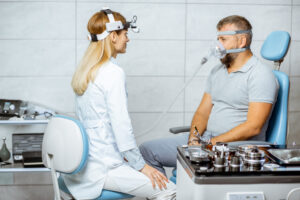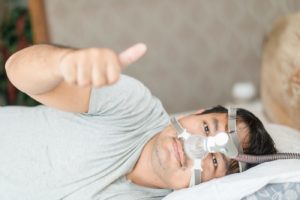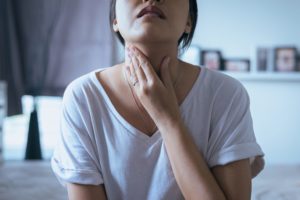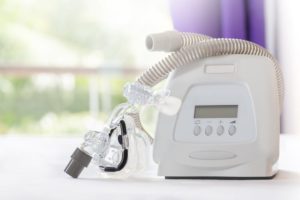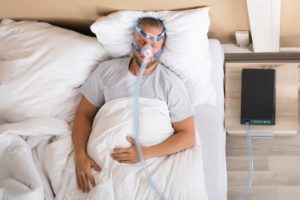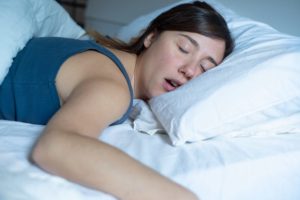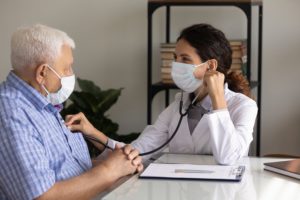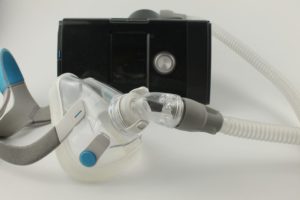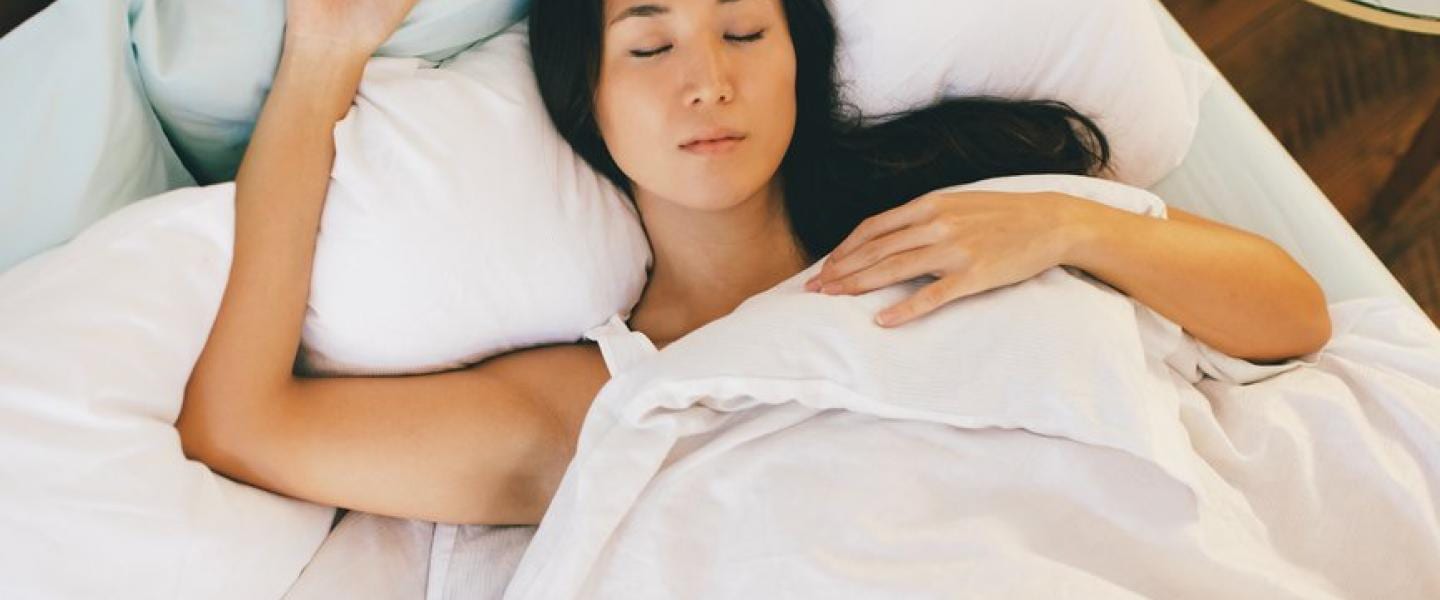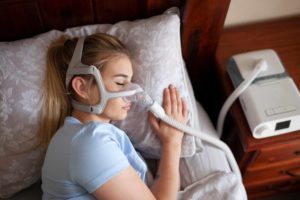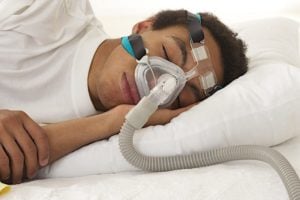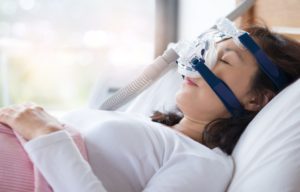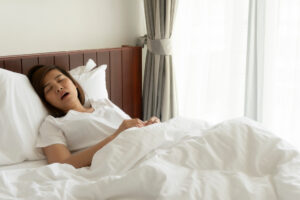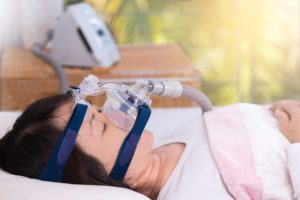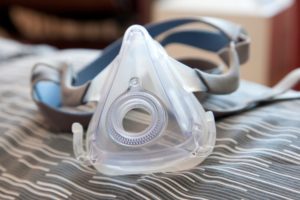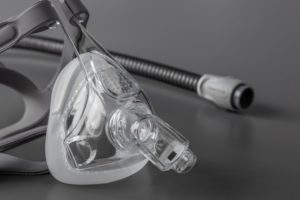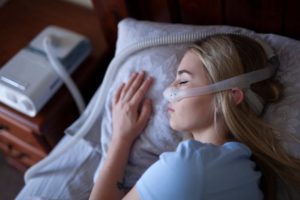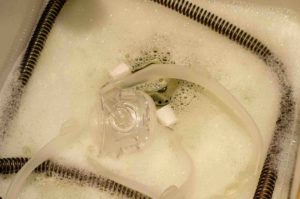When you buy through our links, we may earn a commission. Products or services may be offered by an affiliated entity. Learn more.
APAP vs CPAP
Positive airway pressure (PAP) therapy is a commonly prescribed treatment for people diagnosed with obstructive sleep apnea (OSA). OSA is a sleep disorder in which blockages in the airway cause a person to experience frequent episodes of stopped or slowed breathing while they sleep. PAP therapy helps keep the airway open and prevent these nighttime blockages.
There are multiple types of PAP therapy used to treat OSA, including continuous positive airway pressure (CPAP) and auto-adjusting positive airway pressure (APAP) therapy. We compare and contrast these two types of PAP therapy, as well as discuss their pros and cons and who may benefit from each.
Suspect You May Have Sleep Apnea?
Answer three questions to understand if you should be concerned.
What Is APAP Therapy?
APAP therapy uses an automatically adjusting positive airway pressure machine to treat obstructive sleep apnea. APAP devices may also be referred to as auto-titrating CPAP or auto-CPAP machines.
With APAP therapy, a person wears a mask connected to an APAP machine by flexible tubing. This machine must be plugged into an electrical outlet or connected to a battery and generally sits on a nightstand or bedside table.
The APAP machine pumps pressurized air through the tube and into the mask, which can cover the nose or both the nose and mouth. This air helps keep the sleeper’s airway open, reducing the number of times their breathing is disrupted.
APAP machines use special technology to identify when a person snores or begins to experience a breathing disruption. Once it detects a change in breathing, the machine increases the air pressure to help keep the airway open. Similarly, the machine decreases the rate of pressure when it detects that a higher rate is no longer needed.
APAP Mask Options
APAP machines can be used with different types of masks. The most-commonly used masks cover the entire nose, fit over both the nose and mouth, or sit under the nostrils. A less-commonly used mask covers the entire face. The way a mask is strapped onto the head can also differ, with some mask straps offering ways of reducing contact with the face.
Sleep specialists may have a person try more than one mask option to identify which style works best. The ideal APAP mask is the one that fits the best and feels the most comfortable. If one mask causes discomfort or results in air leaks, another type of mask may be a better option.
Additional Features of an APAP
Like other types of PAP machines, APAP devices may come with additional features.
- Heated humidity: A PAP machine that provides heated humidity has a chamber that must be filled with water every day or two. Adding heated humidity to the air helps reduce dryness in the nose , which can be especially useful in dry regions or during colder months.
- Pressure relief: A pressure relief feature allows medical providers to set up PAP machines so they deliver air at a slightly lower pressure when a sleeper begins to breathe out. This can reduce the discomfort that some people feel when exhaling while using a PAP machine.
- Pressure ramp: Like pressure relief, a pressure ramp feature may also reduce discomfort. This feature lets a sleeper start their machine at a lower air pressure, then the machine increases the pressure over the next 5 to 45 minutes. This gradual increase can help a person fall asleep more easily.
How Is APAP Different From CPAP?
While APAP and CPAP machines are both types of PAP therapy used to treat obstructive sleep apnea, they differ in the levels of air pressure they release. CPAP releases air at a fixed rate, while APAP releases air at a rate that changes in response to the sleeper’s needs.
Technically, an APAP is a type of CPAP machine that includes technology allowing the machine to auto-adjust how much air it delivers at a given time. Traditional CPAP machines that do not contain this technology are sometimes referred to as fixed-level CPAP devices, because they deliver air at a fixed rate of pressure. In the past, fixed-level CPAP machines were most commonly prescribed, but in recent years, the use of APAP machines is increasing .
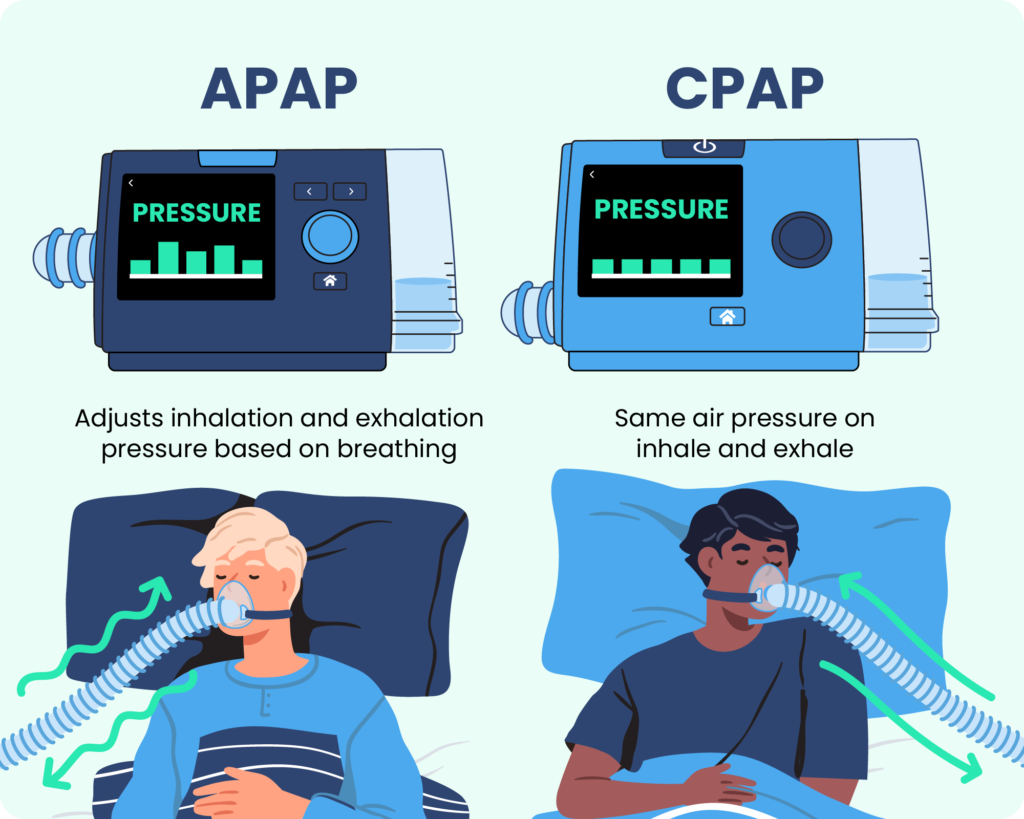
Since APAP machines auto-adjust in response to a person’s breathing, the initial set-up can usually occur in a person’s home , using the machine itself. By contrast, the initial set-up of a fixed-level CPAP machine requires either an overnight sleep study in a lab or the temporary use of an APAP machine at home.
However, certain factors, such as suspected air leakages or the presence of other health problems, may require a person to have their APAP titration in a sleep lab rather than at home.
While some studies show that people tend to use an APAP machine
longer each night
than they would a CPAP machine, more evidence is needed to determine which type of machine is more effective at reducing OSA symptoms. Current research suggests both types of PAP therapy are about equally effective.
Another type of PAP therapy sometimes prescribed to people with OSA is bilevel positive airway pressure (BiPAP or BPAP). Doctors usually prescribe BiPAP only to people who have another sleep disorder or who have tried CPAP and APAP therapies but could not tolerate them.
Why Use an APAP Machine?
Using an APAP machine to treat obstructive sleep apnea may provide some advantages over other types of PAP therapy.
- In-home titration: While the set-up of BiPAP and fixed-level CPAP devices often requires an overnight stay in a sleep lab, an APAP device’s settings can be determined in a person’s home with the machine’s auto-adjusting feature.
- Reduced average air pressure: Some people find it uncomfortable to breathe out against the constant pressure of a fixed-level CPAP. Compared to a CPAP, an APAP machine releases air at a lower average pressure throughout the night, making it easier to handle for some users.
- Adjusting to users’ needs: An APAP machine’s ability to automatically adjust air pressure could benefit a person as their needs change at different times. For example, drinking alcohol, gaining or losing weight, and changing sleep positions can all alter the pressure level a sleeper needs from their PAP machine.
Cons of APAP Therapy
Compared to other types of PAP therapy, there may be some disadvantages to using an APAP machine. For instance, APAP machines cost more on average than CPAP machines. The higher price can be a particular disadvantage if a person’s health insurance does not cover the full cost of their treatment.
Although some people are sensitive to the fixed rate of air pressure from a CPAP machine, others may prefer it to the fluctuating rate of air pressure from an APAP machine. An APAP machine’s regular changes in air pressure during the night could cause brief sleep disruptions, which may lead to side effects.
“In comparison to APAP devices, which constantly adjust pressure, CPAP machines offer a steady and fixed pressure, which is frequently more efficient in preserving a patient’s airway. Additionally, many individuals with sleep apnea choose CPAP machines since they are usually less expensive and simpler to operate.”
Dr. Anis Rehman, Internal Medicine Physician
APAP therapy may also cause the same side effects associated with other types of PAP therapy, including:
- Stuffy nose
- Sore throat
- Dry mouth
- Nosebleeds
- Irritated eyes
- Chest discomfort
- Skin irritation from the mask
- Claustrophobia or feeling trapped
Most of these problems are minor and can be easily fixed by trying a different mask type, cleaning the PAP machine, using a humidifier, or using nasal saltwater spray.
How to Get APAP or CPAP
APAP and CPAP machines are only available with a prescription from a doctor. If you are concerned about your nighttime breathing and think that you may have obstructive sleep apnea, make an appointment with your doctor. Common OSA symptoms include:
- Loud snoring
- Gasping or stopping breathing while asleep
- Daytime tiredness
- Trouble focusing
- Dry mouth
- Headaches
- Reduced sexual interest
- Nighttime awakenings to urinate
If you use a CPAP machine and have difficulty tolerating the air pressure, you may want to talk to your doctor about switching to an APAP machine. Your medical provider can help you determine which OSA treatment is the best for you.

Still have questions? Ask our community!
Join our Sleep Care Community — a trusted hub of product specialists, sleep health professionals, and people just like you. Whether you’re searching for the perfect mattress or need expert sleep advice, we’ve got you covered. Get personalized guidance from the experts who know sleep best.
References
5 Sources
-
Weaver, T. E. (2022, September 13). Assessing and managing nonadherence with continuous positive airway pressure (CPAP) for adults with obstructive sleep apnea. In N. Collop (Ed.). UpToDate., Retrieved December 7, 2022, from
https://www.uptodate.com/contents/assessing-and-managing-nonadherence-with-continuous-positive-airway-pressure-cpap-for-adults-with-obstructive-sleep-apnea -
Perin, C., & Genta, P. R. (2021). Less may be more: CPAP vs. APAP in the treatment of obstructive sleep apnea. Jornal Brasileiro de Pneumologia, 47(6), Article e20210455.
https://pubmed.ncbi.nlm.nih.gov/34932732/ -
Freedman, N., & Kuzniar, T. J. (2021, March 4). Mode selection for titration of positive airway pressure in adults with obstructive sleep apnea. In S. M. Harding (Ed.). UpToDate., Retrieved December 7, 2022, from
https://www.uptodate.com/contents/mode-selection-for-titration-of-positive-airway-pressure-in-adults-with-obstructive-sleep-apnea -
Brown, L. K., & Lee, W. (2022, August 25). Titration of positive airway pressure therapy for adults with obstructive sleep apnea. In N. Collop (Ed.). UpToDate., Retrieved December 7, 2022, from
https://www.uptodate.com/contents/titration-of-positive-airway-pressure-therapy-for-adults-with-obstructive-sleep-apnea -
A.D.A.M. Medical Encyclopedia. (2022, January 1). Positive airway pressure treatment. MedlinePlus., Retrieved December 7, 2022, from
https://medlineplus.gov/ency/article/001916.htm



